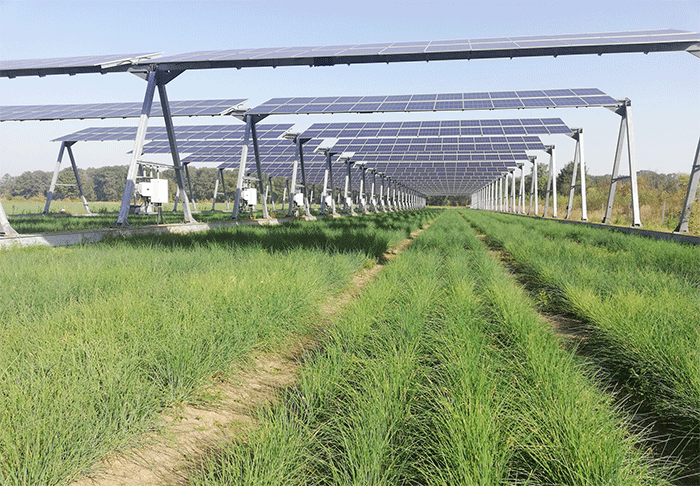Birdlife Among the Solar Panels: How Agrivoltaics Shape Avian Communities
Study of a German trial plot reveals that high-mounted solar panels can support diverse bird use, though habitat complexity remains key

Farms, fields, and the solar transition
As Europe accelerates the shift to renewable energy, farmland is increasingly being asked to serve two purposes: food and power. Agrivoltaics – the integration of solar panels with agricultural land – is one of the fastest-growing approaches. Yet questions remain about how these installations affect biodiversity. A new study by Lars Diekmann and colleagues provides the first detailed insights into how birds use high-mounted agrivoltaic plots, with lessons for reconciling energy production with conservation.
Watching birds beneath the panels
The research took place in Rhineland-Palatinate, Germany, at a high-mounted trial site where solar panels were elevated to allow continued crop growth and machinery access. Over two breeding seasons, the team conducted 414 bird surveys, recording 44 species and more than 4,600 individual birds.
Far from being avoided, the panels created a mosaic of microhabitats. Open strips between the panel rows attracted Skylarks (Alauda arvensis) and Yellow Wagtails (Motacilla flava), while shrubby margins and taller structures supported species like the Red-backed Shrike (Lanius collurio). Insectivores, granivores, and generalists were all observed, suggesting that the panels did not exclude bird communities – though the composition differed from nearby conventional farmland.
Winners and losers in a shared space
The study revealed that some birds readily adapted to the altered landscape. Skylarks in particular were abundant, using the open ground beneath the raised panels for nesting and foraging. By contrast, species dependent on uninterrupted grassland, such as Meadow Pipits (Anthus pratensis), were scarce.
Edge-associated and shrub-loving birds gained opportunities where the panel structures created new perching and nesting sites. Raptors such as Common Buzzards (Buteo buteo) were also noted hunting over the area, likely drawn by prey using the diversified habitats.
Habitat complexity matters
While the panels themselves shaped bird use, the study emphasised that surrounding landscape features and vegetation management were equally important. Sites with diverse vegetation layers, hedgerows, or adjacent semi-natural habitats supported richer bird communities than those dominated by uniform crops.
In effect, the agrivoltaic system acted as a framework – but the conservation value depended on how farmers and land managers enhanced or simplified the habitat beneath and around the panels.
Implications for the energy-biodiversity balance
The findings challenge the notion that solar energy development and bird conservation must always be at odds. High-mounted agrivoltaics, when designed with ecological principles in mind, can sustain diverse birdlife while also producing renewable energy.
However, the study also serves as a warning: without attention to habitat complexity, installations risk favouring only a limited set of generalist species. As Europe moves towards large-scale agrivoltaic adoption, incorporating biodiversity considerations into design and policy could ensure that renewable energy landscapes remain alive with birdsong.
September 2025
Share this story







